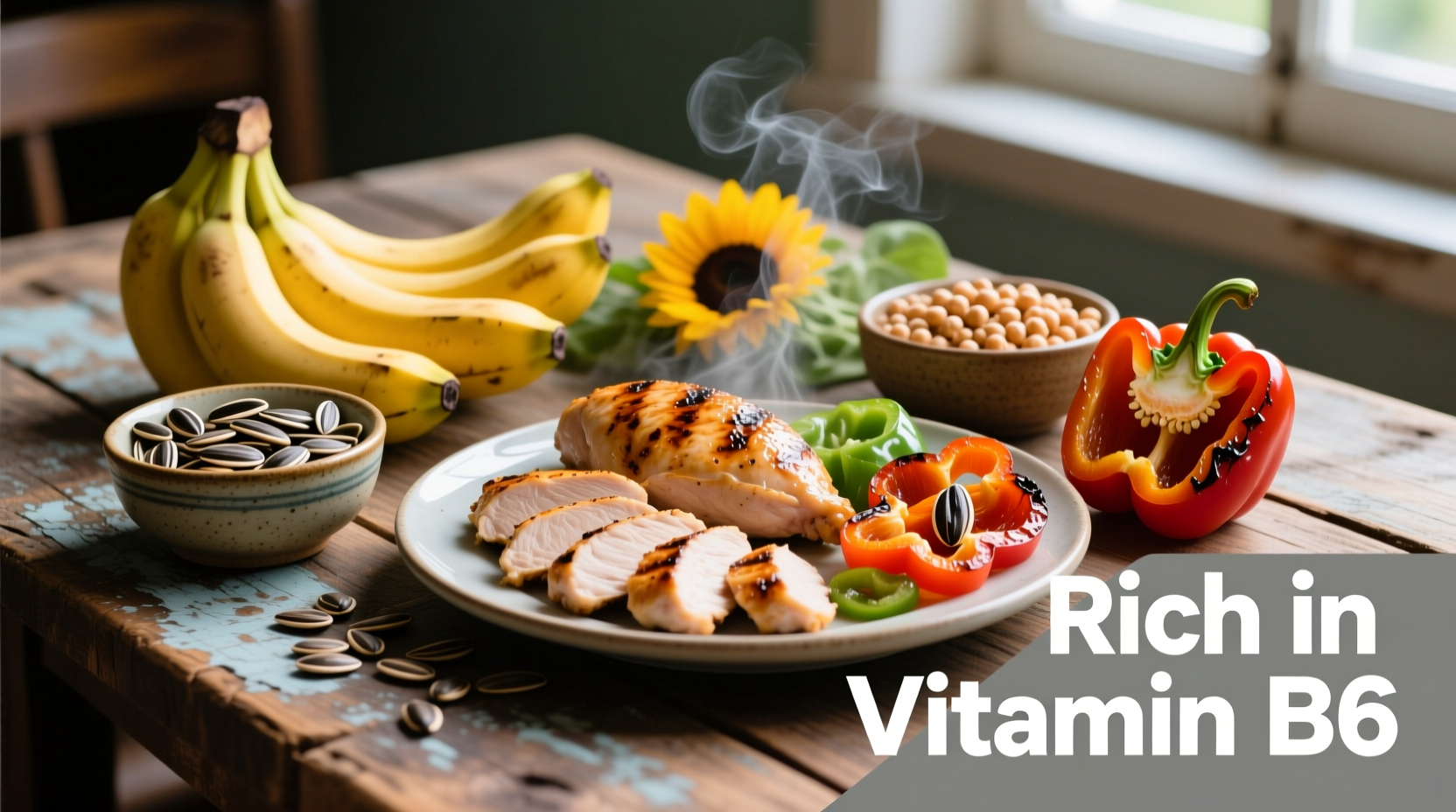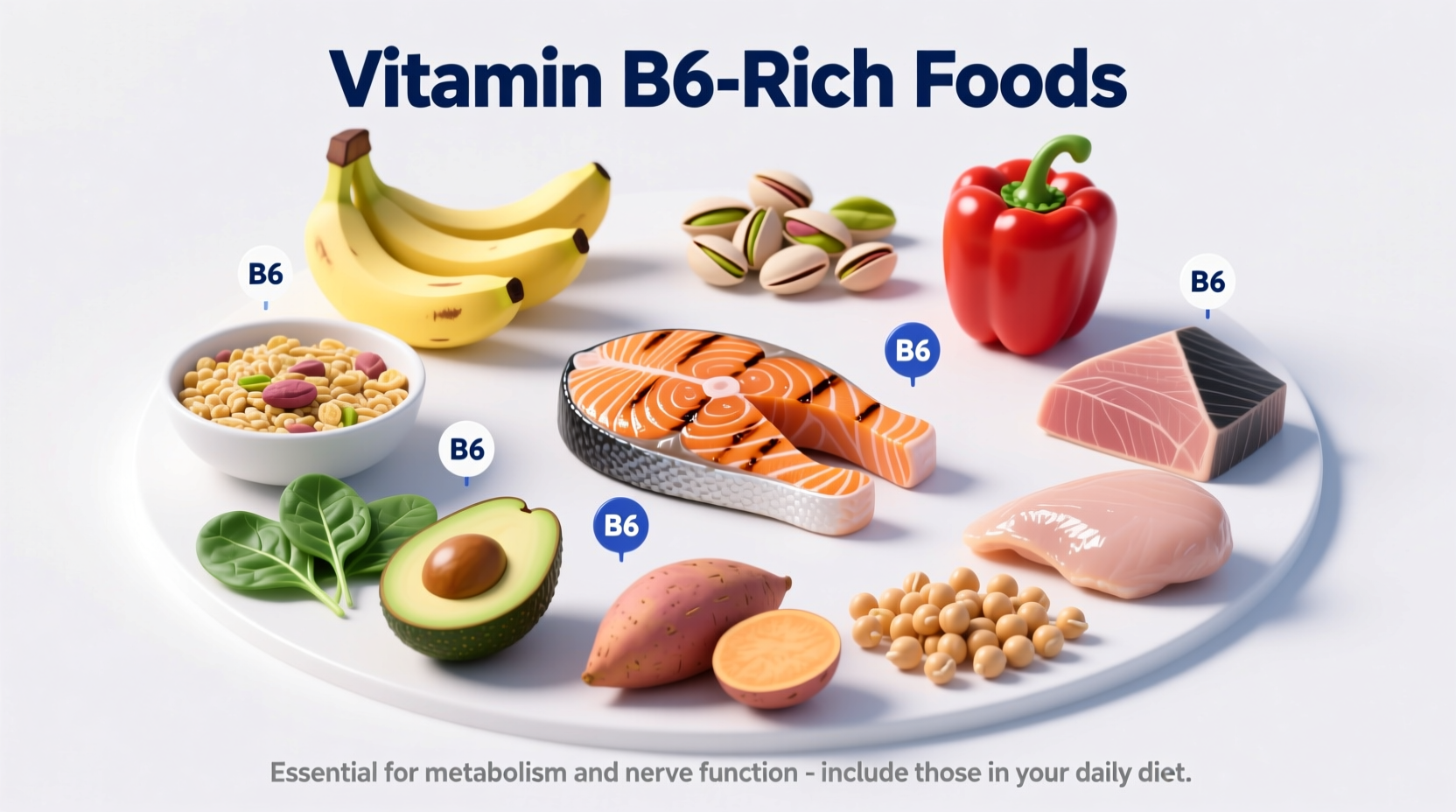Why Vitamin B6 Matters for Your Health
Vitamin B6 plays a critical role in over 100 enzyme reactions in your body, primarily involved in protein metabolism. This essential nutrient supports neurotransmitter creation, hemoglobin formation, and immune function. According to the National Institutes of Health, consistent B6 deficiency can lead to microcytic anemia, dermatitis, depression, confusion, and weakened immunity.
The recommended daily allowance (RDA) varies by life stage:
| Group | Daily Requirement |
|---|---|
| Adults (19-50 years) | 1.3 mg |
| Men (51+ years) | 1.7 mg |
| Women (51+ years) | 1.5 mg |
| Pregnant women | 1.9 mg |
| Breastfeeding women | 2.0 mg |
Top Animal-Based Vitamin B6 Food Sources
Animal proteins generally provide highly bioavailable vitamin B6. These foods deliver substantial amounts per typical serving:
- Tuna - 0.9mg per 3-ounce cooked serving (53% of daily value)
- Salmon - 0.6mg per 3-ounce cooked serving (35% of daily value)
- Chicken breast - 0.5mg per 3-ounce cooked serving (29% of daily value)
- Beef liver - 0.9mg per 3-ounce serving (53% of daily value)
- Turkey - 0.5mg per 3-ounce serving (29% of daily value)
Professional chefs like myself recommend cooking methods that preserve B6 content. Research shows that boiling causes the most significant vitamin loss compared to baking, roasting, or pan-frying. For maximum nutrient retention, avoid overcooking fish and poultry.

Plant-Based Vitamin B6 Powerhouses
Plant foods offer excellent B6 sources, though absorption rates may be slightly lower than animal sources. These options work well for vegetarian and vegan diets:
- Chickpeas - 1.1mg per cup cooked (65% of daily value)
- Potatoes - 0.4mg per medium potato with skin (24% of daily value)
- Bananas - 0.4mg per medium banana (24% of daily value)
- Sunflower seeds - 0.3mg per 1/4 cup (18% of daily value)
- Sweet potatoes - 0.3mg per medium potato (18% of daily value)
- Spinach - 0.2mg per cup cooked (12% of daily value)
When preparing plant-based B6 sources, remember that certain cooking techniques enhance nutrient availability. For example, roasting chickpeas creates a crunchy snack while preserving their impressive B6 content. The USDA FoodData Central confirms that canned chickpeas retain approximately 90% of their vitamin B6 after proper rinsing.
Fortified Foods and Breakfast Options
Many breakfast cereals and plant-based milks are fortified with vitamin B6. Check nutrition labels for:
- Fortified breakfast cereals (0.5-1.0mg per serving)
- Fortified plant milks (0.2-0.4mg per cup)
- Nutritional yeast (0.2mg per tablespoon)
While fortified foods provide convenient B6 sources, whole food options generally offer additional nutrients and fiber. For balanced nutrition, prioritize natural food sources before relying on fortified products.
Practical Meal Planning with B6-Rich Foods
Creating meals that naturally incorporate vitamin B6 doesn't require complicated recipes. Here are three simple meal ideas that meet 75-100% of your daily B6 needs:
- Breakfast: Oatmeal topped with banana slices and sunflower seeds (0.6mg B6)
- Lunch: Chickpea salad with potatoes, hard-boiled eggs, and spinach (1.2mg B6)
- Dinner: Baked salmon with roasted sweet potatoes and bell peppers (1.1mg B6)
When building your meals, consider pairing B6-rich foods with vitamin C sources like bell peppers or citrus fruits. This combination enhances iron absorption from plant-based foods while providing complementary nutritional benefits.
Special Considerations for Vitamin B6 Intake
Certain populations may need to pay special attention to their vitamin B6 intake:
- Vegans and vegetarians should monitor B6 intake as plant sources have slightly lower bioavailability
- Older adults often need higher amounts due to decreased absorption efficiency
- People with kidney disease may require adjusted intake under medical supervision
- Those taking certain medications like isoniazid or cycloserine may need supplementation
While vitamin B6 deficiency is relatively uncommon in developed countries, certain medications and health conditions can interfere with absorption. The Mayo Clinic notes that symptoms of deficiency include fatigue, confusion, depression, and a weakened immune system. If you suspect deficiency, consult a healthcare provider before starting supplements.
When Supplements Might Be Necessary
Most people can meet their vitamin B6 needs through diet alone. However, supplements may be appropriate in specific situations:
- Confirmed deficiency diagnosed by a healthcare provider
- Certain genetic disorders affecting B6 metabolism
- As part of a comprehensive prenatal vitamin regimen
- Under medical supervision for specific health conditions
Never exceed 100mg daily without medical supervision, as high doses can cause nerve damage. The tolerable upper intake level (UL) for adults is 100mg per day according to the NIH Office of Dietary Supplements.











 浙公网安备
33010002000092号
浙公网安备
33010002000092号 浙B2-20120091-4
浙B2-20120091-4